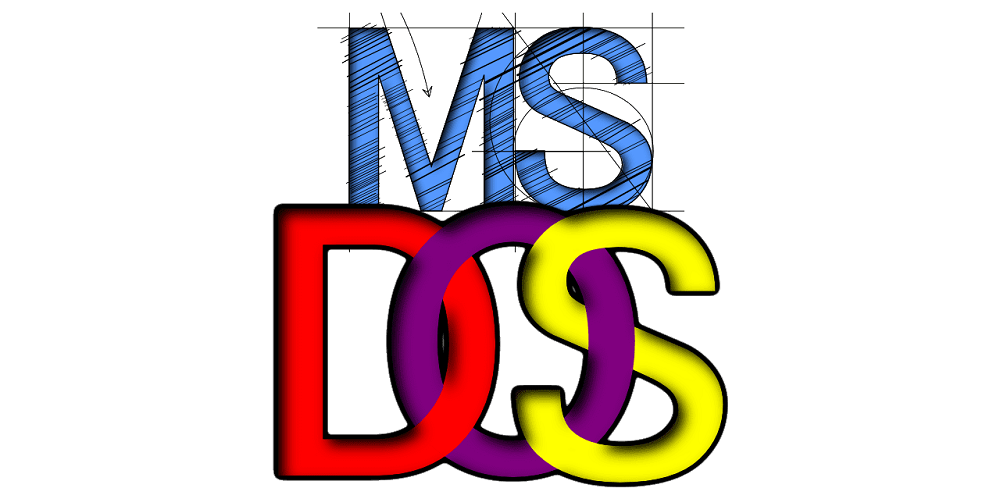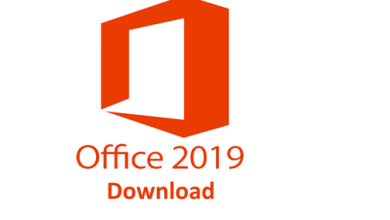
MS-DOS existed before Windows. These days, it’s a fairly useless moniker you might have seen on old PCs, software, or surfing sites like this. But what exactly is MS-DOS? Why did it exist on older computers, and what happened when Windows came along? Is anyone still using MS-DOS?
What’s MS-DOS?
The MS-DOS, which stands for Microsoft Disk Operating System, is sometimes known as Microsoft DOS. A “disk operating system” (DOS) is essentially a set of tools and commands for running software from disk (a hard disk drive or floppy drive) and maintaining the device (for example, formatting). Furthermore, DOS commands would allow you to install and run the software. Typically, this would be spreadsheets and word processors; but occasionally, it may also contain games or art software.
Nowadays, everything is wrapped up in Windows or whatever operating system you choose, replete with a mouse-driven graphical user interface (GUI). However, when the PC emerged, the DOS—a command line interface—was how you interacted with the device. However, if you booted up a PC running MS-DOS today, you’d notice two significant differences.
- There can only be one app running at a time (no multitasking).
- User accounts are not supported.
MS-DOS debuted in 1981 and was discontinued in 2000 with the release of Windows Me. With the introduction of Windows 95, MS-DOS was relegated to the background as a secondary mode for running older software. MS-DOS was essentially non-existent by the time of Windows XP, with only mediocre DOS emulation and an emergency boot disk that relied on it. There is no longer a need for an MS-DOS boot CD in Windows 10. Floppy drives are no longer included with computers!
Before Windows: PC-DOS, & MS-DOS
When IBM created the first personal computer, a disk operating system was required. It went to Microsoft to create PC-DOS for this purpose. Many old PCs booted with the term PC-DOS appearing on the POST screen. However, this altered over time when IBM ceased to be the exclusive manufacturer of PCs.
Columbia Data Products was the first to reverse engineer the PC’s BIOS, and Compaq quickly followed. When this happened, every manufacturer could create their own BIOS. Taking advantage of this, Microsoft released MS-DOS to IBM’s PC rivals. As a result, Microsoft created both PC-DOS and MS-DOS. As IBM’s share of the PC market, which it developed, decreased, so did PC-DOS utilization.
MS-DOS & Windows
Microsoft gained a foothold in the early PC sector thanks to MS-DOS. While it had previously developed disk operating systems for the MSX and Commodore, it recognized the business computer market as a growing target. Microsoft had previously released office programs for MS-DOS, and Windows 1.0 was released in 1987. A GUI interface has been present on Apple and Amiga computers for several years since the first version of Windows was introduced on the PC.
MS-DOS use decreased with each version of Windows. When Windows 95 arrived, it was the beginning of the end for MS-DOS, thanks to the addition of a web browser. The PC no longer booted into MS-DOS; instead, it booted into Windows. Windows 95 and 98 included an MS-DOS mode accessed via the GUI. This accommodated both old software and new games, many of which were released without Windows support.
What’s Emergency Boot Disk?
Windows 95 installation needed a boot disk and the installation media (13 3.5-inch floppy disks in total, but it was also available on CD-ROM). The Windows may be reinstalled using the boot disk if the operating system fails. Windows 95 and later (up to and including Windows 8.1) could generate an emergency boot CD. This includes fundamental MS-DOS files that aided in Windows reinstallation.
To summarize, you would enter the boot disk into the computer, allowing the installation of the operating system to begin. As a result, Windows could be reinstalled as long as you possess the installation discs. Until Windows XP, the operating system was installed via the boot disk. While emergency boot disks may be generated for system recovery, Windows XP requires only the installation media.
How Command Prompt Replaced The MS-DOS Prompt?
You’ve probably heard of the Windows Command Prompt. This black box interfaces with a Windows PC or laptop through the command line. (You may access it by hitting WIN+R, then typing cmd and pressing OK.) It first appeared in the last days of MS-DOS; Windows 95 and 98 could switch into MS-DOS mode or access it through what became the Command Prompt. It was the MS-DOS prompt back then, and you may still come across someone who refers to it that way. The Command Prompt gained prominence as MS-DOS legacy support was eventually removed from Windows. As a result, Windows PowerShell has taken its place.
Emulate MS-DOS With DOSBox

With all this discussion about MS-DOS, you might wonder if you can still use it. You don’t need an old computer to enjoy MS-DOS. DOSBox has supported the emulation of the MS-DOS environment since 2002. DOSBox allows you to run old software (MS-DOS titles released between 1981 and 2001) on a contemporary PC. While the DOSBox project was created to run any DOS software, it is now mostly used for gaming. This is demonstrated in our tutorial on playing old games on DOSBox.
MS-DOS Is Now Open Source & On GitHub
Recognizing MS-DOS’s significance, Microsoft released versions 1.25 and 2.0 on GitHub, expressly “for reference purposes.” It has signed up to the Microsoft Open Source Code of Conduct. This is a significant shift because Microsoft has generally been a proponent of closed source. Permission is granted to fork and play with MS-DOS, but this is an early version. MS-DOS 8.0 on Windows Me was the most recent release. What if you wanted to download and install MS-DOS on an old computer?
Need OS For An Old PC? Try FreeDOS
Assume you have an old PC from the 1990s that you want to get up and running. Attempting to run current software would be futile because things have changed. However, this system can run software from the last 20 years. However, there is a problem: an unbootable HDD necessitates reinstalling the operating system. You’ll need an alternative because the open source version of MS-DOS could be more useful for software created after 1990.
This is when FreeDOS comes into play. FreeDOS is open source software distributed under the GNU General Public License. FreeDOS may be installed if your old PC or laptop has a CD-ROM drive. If necessary, there is also the option to use a boot disk. FreeDOS may be installed from a USB device on more contemporary systems. FreeDOS may also be downloaded and run on a virtual machine on a PC. It works exactly like MS-DOS since it is a substitute for it. You can even build programs in FreeDOS, as demonstrated in the movie.
Download: FreeDOS (free)
Conclusion:
It’s astonishing that software written over 40 years ago still has clout. The PC would not have taken off without MS-DOS; there would be no Microsoft Windows. It’s a blessing that we can still use MS-DOS through the open source distribution, DOSBox, or FreeDOS. On systems running MS-DOS and its variations, plenty of wonderful apps and games may be explored. While you may buy them from GOG.com and install them on a current PC (thanks to DOSBox technology), you can use a Microsoft DOS-based PC instead.



